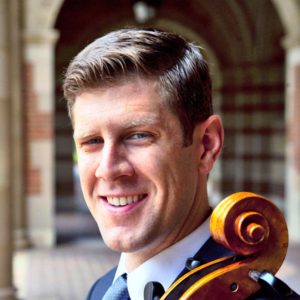
Numbers
Jonathan Thomson
I believe in numbers.
Part of what I love about running is that everything is quantifiable. I can track distance and pace meticulously throughout my training, and from that data predict my race time with alarming accuracy. By wearing an inexpensive device on my wrist, I can track my calories burned, activity throughout the day, and sleep (including deep vs. light sleep, and when I wake in the middle of the night). Through a free website (many are available), I can track my runs and see colorful graphs that can show how intricate relationships between distance, pace, rest, weight, weather, and wear on my shoes all add up to my overall running performance.
My cello life can be less intentional. First of all, there’s no way to truly quantify “musical goodness.” Practicing for a set time each day does not ensure success—an intensely focused 30 min. session may be more productive than a 2 hour one. Similarly, deciding to practice a passage 10, 20, or 100 times can be completely mindless and unproductive.
We all must learn to be more efficient and more intentional in our practicing. Despite the difficulty of quantifying music, there are important correlations between sports training and musical practice.
Many students are familiar with sports and find anecdotes useful. Take baseball, for example: if a hitter gets a hit one out of every three times, he will have a .333 average and may be one of the top hitters the league. There are only 42 notes in Twinkle Twinkle—is it recognizable if you only play 14 of the pitches correctly? What about the rhythms? (try it with students, it can be a lot of fun!) Then consider a basketball player: a 50% field goal percentage is very good, and 40% for three pointers is outstanding. Though seen as one of the greatest ever, Kobe Bryant has missed more shots than anyone in the history of the NBA (13,766 misses and making 45.3% of his shots). Again, these percentages are way too low for musicians. We basically must play without any mistakes, and even then, the tiniest issues of bow control, vibrato, phrasing, are subjective and can be judged as mistakes. What percentage, then, do we need to hit as musicians? 99%? 99.9%? And beyond obviously wrong notes, what tiny discrepancies count as mistakes?
Consider shooting free throws in basketball. An exceptional shooter like Stephen Curry makes it 90% of the time. Free throws play a crucial part in the strategy of the game for many reasons, but it is particularly critical to make them at the end of the game when the shooter is tired. In many respects, this is a simple shot. It is always exactly 10′ from the hoop, and a nail is even placed in the floor to line up precisely with the exact center of the rim. Players adopt routines they will not deviate from, and practice this shot countless times, every time they practice. Despite how routine and automatic this shot is, in game situations, even the best players miss 10% of the time.
Andre Agassi discusses in his autobiography, Open, how his mathematician father made him train at an early age with a modified ball machine called The Dragon:
My father says that if I hit 2,500 balls each day, I’ll hit 17,500 balls each week, and at the end of one year I’ll have hit nearly one million balls. He believes in math. Numbers, he says, don’t lie. A child who hits one million balls each year will be unbeatable.
Again, a high volume of practice is necessary and beneficial, for athletes and musicians alike. The practice itself must be of the highest quality, though: undertaken with intense, sustained focus. This is particularly critical for musicians—90% accuracy is not nearly high enough.
So how do we balance volume and quality of practice?
Agassi developed a kind of hatred, but also an affection, for The Dragon—he came to value the quantity of practice his father forced on him in his early years, but later learned to practice more efficiently. I vividly remember a basketball coach who made us shoot free throws at the end of practice. Each player took one shot: for everyone who missed, the whole team ran a set of lines; anyone who complained about a teammate’s miss ran extra lines. This was a brilliant way to train us to shoot well under pressure when also tired, and also taught us the importance of developing camaraderie. In marathon training, it isn’t simply about completing increasingly long runs: there is an intricate balance of weekly distance, long run distance, and speed workouts, all targeted to develop endurance and speed.
Like athletes, cellists need both endurance and precision. I do not know of a formula for practice time that guarantees 99.9% accuracy (and cleanliness should not be the only goal in music, anyway). Some passages may require an exhaustive amount of repetition, whereas other skills may need far less reinforcement. What comes easily and what is difficult is highly personal, so you must learn to develop and monitor your own practice habits. We should all keep track of practice time and what we practice, in order to be honest with ourselves—it can only benefit us to look back, see trends in our practicing, and evaluate how the resulting performances went.
Develop a system to track your practicing, not just with perceptions, but with clear details about how much and what you practice!
Subjects: Practicing
Tags: cellobello, CelloBlog, Jonathan Thomson, Marathon, numbers, practicing
